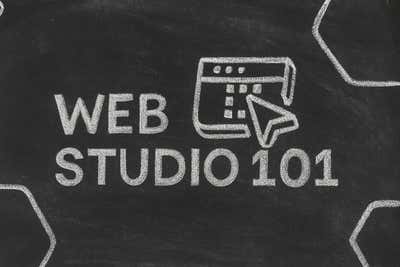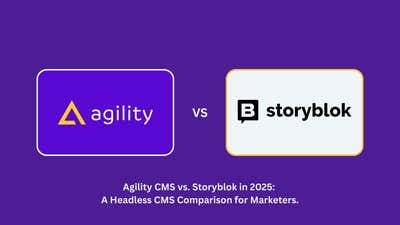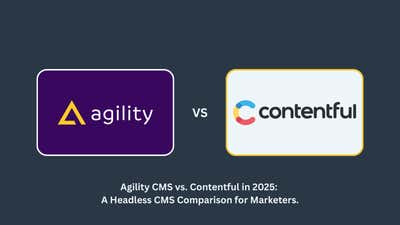How to Build a Content Governance Workflow That's Right For You
What is Content Governance Workflow and Why it is Important


What qualifies as good content creation? Or what makes a brilliant content strategy? Is it creativity? Perhaps it’s talented content creators? A sizable content budget, too? While all of these things can definitely improve your content quality, there’s one thing many brands and businesses tend to forget when establishing content strategies… Workflow.
Think about your content as a product made for your digital customer. It needs to be designed, manufactured, packaged suitably, and delivered. Your business has to oversee different areas that facilitate these steps. Well, content also needs to be conceptualized, created, tailored to different platforms, and shared. But, how does your business oversee your content life cycle?
Do you have an orderly system to track the flow of your content? No? That’s where content governance comes in…
What is Content Governance?
Content governance is the daily regulation of content elements like style and tone, delivery, and quality. Not only does it involve overseeing the day-to-day details of content creation and distribution, it also includes the management of long-term content plans and systems.
Thus, content governance is a structure that clarifies details of your content plan like employee responsibilities, deadlines, branding identities and style guides, and application procedures.
Why Is It Important? The Benefits Of Content Governance
It may seem paradoxical to speak of creative processes and structure in the same breath, however, the two are not opposed to one another. In reality, creativity cannot truly exist without discipline, for a dancer cannot nail a routine without practice and a singer may not achieve a note without consistent rehearsal.
Discipline is an integral part of creativity and content governance affords it to your creative team along with the following benefits:
- boosts team productivity
- promotes faster content delivery, for speedier returns
- eliminates bottlenecks
- ensures consistency
- sets a standard for creation procedures, promoting consistent style and editorial quality
- improves content quality
- enables accountability, control & responsibility
- enhances brand image and reputation via good content
- makes sure that no content gets lost
- empowers content creators and improves work happiness
3 Content Governance Workflow Models
Centralized Workflow
This model includes a core or central committee that oversees content processes. All parts of the content creation process lead to this committee that is then responsible for conducting quality assurance (QA), applying execution strategies, and, often, publishing the content.
This model promotes accountability and clarifies responsibilities as the core team streamlines the organizational content procedures. It also factors in an important step - quality checks. You want to ensure all content your business shares is of a good standard, and this step ensures this.
However, with this workflow, you need speedy and accessible communication methods to avoid other employees waiting too long to receive information from the core team. Read up on things like this RingCentral Glip and Microsoft Teams comparison to help you select convenient communication channels that boost productivity.
Decentralized Workflow
This model is, somewhat, the opposite of the centralized workflow. In a decentralized workflow, each individual is responsible for creating, checking, and publishing their own work.
The clear downside of a system that functions in this way is a lack of consistent standards and accountability. Everybody evaluates their own work, thus, there are no quality checks. This results in different styles and standards of work and may affect readability and accessibility, thus, alienating the consumers of your content.
While this option may be faster as it eliminates the ‘bureaucracy’ of having central management, it may sacrifice the content quality.
Hybrid Workflow
A hybrid is exactly what it sounds like - it is a combination of the above models.
With this workflow, you can have a core team managing content and conducting quality checks, but you can have some content elements that follow a decentralized method.
For example, information on your customer contact solutions on your website contacts page is a sales content area. Your sales team can just publish this themselves without running it past the central team. But content like blogs and social media posts may undergo checks.
Thus, this system can improve productivity, as your content committee can focus on the content they specialize in. In addition to this, other specialists (like sales representatives) can make sure the content shared is correct.
The important thing that this kind of workflow needs is strong management and distinctly-defined roles. With the mixed-system, it can be easy to get confused about who is responsible for what. Good management must promote clear communication and divide roles clearly to avoid misunderstandings.
How To Build A Content Governance Workflow In 5 Steps
Here are five steps you ought to complete to build your content governance workflow.
Allocate clear responsibilities
Your content governance workflow should reduce bottlenecks and issues that arise from working in teams. This includes confusion and misunderstandings about roles and responsibilities.
Be sure to define and limit roles. This guarantees the responsible individual completes the correct tasks. It also constrains people from stepping into roles that aren’t theirs, for example, adjusting fonts or colors when you’re not a designer.
If you choose a centralized, or hybrid workflow, your core team will work as a brilliant tool to dole out responsibilities. However, even within the team, there should be a veto power or clear division of roles, so that there aren’t too many clashing opinions.
Identify the content types you work with
In order to successfully allocate work, you need to evaluate what kind of content your business creates and the channels it utilizes in the creation and distribution processes. Doing so will help you assess which processes are working efficiently and need no changes, and which ones could use improvement. Essentially, this is an auditing step, to improve your content processes.
When establishing your content system consider these steps:
- Define content goals and aims and document them (creating briefs essentially)
- Set Key Performance Indicators (KPIs) and monitor analytics to help you track the success of your content in reaching your goals
- Identify your target audience (the people you hope will consume your content)
- Establish your organization’s content channels. Where is the best place to share your content? This could be your website, social media channels, newsletters, blogs, email marketing, online content for translation, etc.
- Create a style guide with clear instructions, design elements, writing structures, etc., to ensure a content standard across the board.
- Include a quality check method to assess the accuracy and implementation of your brand’s style and message.
Choose workflow models
Choose a workflow type and educate your employees on policies and their role. Educating your employees creates understanding and accessibility, and helps avoid delays caused by confusion and mistakes.
Try online learning strategies, workshops, and other forms of training to accustom your workers to the model. You should also be open to learning and improving the workflow, adjusting elements that do not work. The choice of workflow should also create opportunities for your employees to learn new skills and technological trends. If you were to adopt a particular workflow for your content team, you may encourage the executives to enroll for an online MBA program in analytics and strengthen their core skills. This way both the individual and the organization will grow.
Use Software Solutions
Once you have your system in place, it will be easy for you to point out areas that could benefit from software assistance. The first and non-negotiable software you should look into is security software. You need to use the best enterprise network security products to ensure the protection of your content.
Another useful software solution to consider is automation. Introducing automated processes will reduce your employees’ workload, freeing up human and other resources to complete other tasks.
Use Content Governance Tools
There are many tools you can introduce at different steps in your content governance including:
- Spreadsheets
- Content management systems
- Content briefs
- Content committee
- Editorial guides
- Style guides
- Archiving standards
- Communication channels
- Strategy playbooks
- Form builder software for feedback purposes
The kind of tools you choose to utilize depend on all of the factors above. However, you should avoid introducing too many changes all at once!
How to use Headless CMS for Setting up Content Workflows
Your CMS is an essential tool for setting up efficient custom workflows for your team. At the end of the day, this where all your content lives and this is where all you content contributors work with it.
A modern Headless CMS not only contributes to team efficiency but also content security: what kind of people in the team should or should not have access and publishing rights to various types of content.
At the end of the day, the main goal is to increase collaboration with your team members, while maintaining the quality of your content.
Consider that you have multiple editors managing content. Often, you'll need to review their work for quality assurance. CMS Workflows allow you to customize how your team reviews and publishes website content.
An example of content approval workflow:
- A content editor has set up a new landing page for a campaign on their website
- When the editor feels the page is ready, they need to notify their approver to review
- The approver would review the content and decide whether this page should be published or not
- Once the approver is satisfied, they would approve the content
- Approved content can now be published
Control What Your Users Can Do
You'll want to ensure your editors can't bypass or override your content approval workflow. This is controlled by setting the appropriate roles for your users. You can have full control over who must abide by your approval workflow, and who can override it.
Sometimes you may want a user to be able to modify some specific content. IN Agility CMS, this can be done by setting a user's role to Reader and setting security roles on the specific page or content item you want them to modify. Let take a look at an example of this.
After setting a user's permission to Reader, I want to go ahead and grant him the ability to only manage content within the Home Page.
On my Home page, I can navigate to the Security tab and add a new user to the list. This is a list of the users who have specific access to this item.
After selecting a user, I can then select the role I want to give them from the list and submit. In my case, I'll give this user Publisher permissions.
Learn more: How to set User Roles for a Content Approval Workflow
Keep Track of Approvals
When an editor requests approvals for content, you'll have a task assigned to you. This allows you to manage your approvals in a central location.
Publishers are able to edit modules (make changes, save, publish, and unpublish) and can publish and unpublish pages.
In agility CMS, the Publisher will receive an Alert in their 'Tasks' notifications that a change has been made on a module and is requesting approval. The Publisher can navigate to the content item that was changed by clicking on the Location link.
The Publisher can either DECLINE or APPROVE the changes made. If DECLINED, the Editor will receive a task notification that it has been declined, and to review your changes. The Editor will receive a task notification if the changes have been APPROVED. Once approved, the Publisher can Publish the changes.
Get Notified of Changes
When you aren't in the CMS, reviewing your tasks, you can get notified of workflow changes via email using alerts. This can also be helpful for users who simply want to get notified when content changes.
Agility allows users to set up email alerts to be notified when there are content changes done to a page or module.
There are different types of alerts that can be set up. Here is a breakdown of the most common alert types:
Update: Users will receive an email notification when content has been updated
Approve: Users will receive an email notification when content changes have been Approved
Decline: Users will receive an email notification when content changes have been Declined
Request Approval: Users will receive an email notification when Content is pending Approval (waiting to be approved)
Publish: Users will receive an email notification when content items are published
Challenges That Your Content Governance Workflow May Encounter
Working with a team is also about managing people, and your employees may not adjust well to the changes a new workflow brings with it. Anticipate the following challenges:
- There may be disagreement on what constitutes content. Content isn’t just what your business puts online for marketing. It includes all information distributed via online and physical media from pamphlets and physical ads to podcasts and the contacts page on your website. Even sales scripts with inbound rules for sales reps count as content.
- Resistance to structuring creative processes.
- Insistence from creative specialists on their own processes.
- A lack of understanding of what content governance is and how to implement it.
- Not having the right tools in place, like using an outdated traditional CMS or not being familiar with Worflow tools your DXP or CMS can offer.
Conclusion
Content has immense power in shaping the reputation and image of your organization, improving brand recognition and awareness, and attracting and informing consumers. Introducing a content governance workflow streamlines your creative process and opens up the potential for better quality content and increased productivity.
A well-implemented workflow eliminates confusion, bottlenecks, misunderstandings, mistakes, and the delays of bureaucracy. If you build it with patience and an open mind, your workflow can transform your content creation procedures and embolden your creative team to do more.

About the Author
Victorio is the Associate SEO Director at RingCentral, a global leader in cloud-based communications and collaboration solutions. He has over 13 years of extensive involvement on web and digital operations with diverse experience as web engineer, product manager, and digital marketing strategist.



